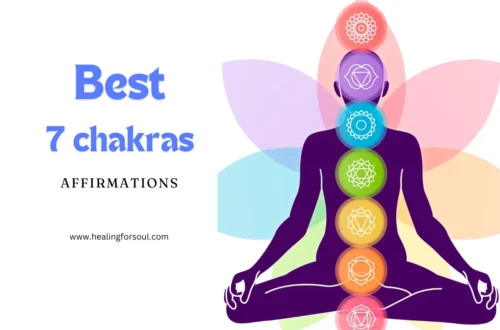Introduction
Feeling stressed out? Need a mental vacation but can’t afford the time or money for a real one? Well, you’re in luck! Vedic meditation mantras might be just what you need. These ancient sounds can transport your mind to a place of calm and clarity without ever leaving your home. Sounds pretty good, right? Let’s dive into the world of Vedic meditation mantras and see how these powerful tools can bring peace and enlightenment into your life.
Vedic Meditation Mantras: An Ancient Practice
Vedic Meditation Mantras have been around for thousands of years. Originating in the ancient Vedic texts of India, these mantras are sounds or phrases repeated during meditation. Their purpose? To help the mind transcend ordinary thought processes and reach a state of deep rest and heightened awareness. In a world where we’re constantly bombarded with information, these mantras can be a sanctuary for our overworked brains.
What Exactly is a Vedic Mantra?
A mantra is essentially a sound or a series of sounds. In the context of Vedic meditation, these sounds don’t have to have specific meanings. The power lies in the sound vibrations themselves, which can influence the mind and body in profound ways. Imagine a single note from a violin resonating in a concert hall – it’s simple, yet it can fill the entire space with its presence.
The Science Behind Vedic Mantras
You might be wondering, “Is there any science to back this up?” Absolutely! Studies have shown that meditation, including mantra-based practices, can reduce stress, improve concentration, and even lower blood pressure. The repetitive nature of mantras can create a calming rhythm, much like a lullaby for the mind, helping to quiet the chatter of daily life.
Benefits of Practicing Vedic Meditation Mantras
Stress Reduction
First and foremost, Vedic meditation mantras are fantastic for stress reduction. By focusing on a single sound, you give your mind a break from the relentless stream of thoughts. It’s like hitting the pause button on your worries.
Enhanced Focus and Clarity
Need to focus on a big project? Mantras can help with that too. They train your mind to concentrate on one thing at a time, which is a skill that can spill over into other areas of your life. You might find yourself more focused and productive at work after just a few weeks of practice.
Emotional Stability
Ever feel like your emotions are a rollercoaster? Mantras can help stabilize your mood. The regular practice of Vedic meditation mantras can lead to a more balanced emotional state, making you less reactive to the ups and downs of life.
Choosing Your Vedic Mantra
Personal Mantras
In Vedic tradition, mantras are often chosen for the individual by a teacher. These personal mantras are selected based on various factors, including the person’s nature and needs. However, if you’re practicing on your own, you can choose a simple, universally effective mantra like “Om” or “So Hum.”
Traditional Vedic Mantras
There are countless traditional mantras to explore. Some popular ones include:
- Om: The sound of the universe, representing the essence of the ultimate reality.
- So Hum: Meaning “I am that,” this mantra is a reminder of our connection to the universe.
- Gayatri Mantra: A prayer for enlightenment and wisdom, this is one of the most revered mantras in Vedic tradition.
How to Practice Vedic Meditation with Mantras
Find a Quiet Space
First things first, find a quiet spot where you won’t be disturbed. Your bedroom, a quiet corner of your living room, or even a peaceful spot in your garden can work wonders.
Sit Comfortably
Sit in a comfortable position. You don’t need to twist yourself into a pretzel; a simple cross-legged position or sitting on a chair with your feet flat on the ground is just fine.
Close Your Eyes and Relax
Close your eyes and take a few deep breaths. Let go of any tension in your body.
Repeat Your Mantra
Begin repeating your chosen mantra silently in your mind. If your mind starts to wander (and it will), gently bring your focus back to the mantra. It’s okay if your mind drifts – the practice is in bringing it back.
Practice Regularly
Consistency is key. Try to practice for 20 minutes twice a day. If that sounds daunting, start with just 5 minutes and gradually increase the time.
Common Misconceptions About Vedic Meditation Mantras
You Have to Be a Monk
One common misconception is that you have to lead an ascetic life to benefit from meditation. Not true! People from all walks of life practice Vedic meditation mantras, from busy professionals to stay-at-home parents.
It’s Religious
While Vedic mantras have their roots in Hinduism, the practice itself is not inherently religious. It’s more about the mental and physical benefits than any religious doctrine.
It’s Time-Consuming
Think you don’t have time to meditate? Think again. Even a few minutes a day can make a significant difference. Plus, the time you spend meditating can actually make you more productive, so you might find you have more time than you thought!
Personal Experiences with Vedic Meditation Mantras
Let’s hear from some folks who have incorporated Vedic mantras into their lives:
- Samantha, a marketing executive: “I was skeptical at first, but after a few weeks of practicing Vedic mantras, I noticed a significant reduction in my stress levels. I’m more focused and less reactive to stressful situations.”
- John, a stay-at-home dad: “Meditation has become my little escape. With three kids, life can get pretty hectic, but those few minutes of chanting my mantra help me reset and be more patient with my kids.”
- Linda, a retiree: “I’ve tried different meditation techniques over the years, but Vedic mantras resonate with me the most. They bring a sense of peace and connection that I haven’t found elsewhere.”
Incorporating Vedic Mantras into Daily Life
Morning Routine
Start your day with a short meditation session. Even five minutes of chanting a mantra can set a positive tone for the day.
During Breaks
Use your breaks wisely. Instead of scrolling through social media, spend a few minutes chanting your mantra. It can be a great way to recharge your mind.
Before Bed
End your day on a peaceful note by meditating before bed. It can help clear your mind and prepare you for a restful sleep.
FAQs
What is the difference between Vedic meditation and other forms of meditation?
Vedic meditation often uses mantras, whereas other forms might focus on breath, visualization, or mindfulness.
Do I need a teacher to practice Vedic meditation mantras?
While having a teacher can be beneficial, it’s not strictly necessary. Many people successfully practice on their own using resources like books and online guides.
Can anyone practice Vedic meditation mantras?
Yes, anyone can practice, regardless of age, background, or belief system.
How long does it take to see the benefits of Vedic meditation mantras?
Some people notice benefits almost immediately, while for others, it might take a few weeks of regular practice.
Can I use any word as a mantra?
Traditional Vedic mantras are preferred because of their specific sound vibrations, but in principle, you could use any word or sound that resonates with you.
Is there a best time to practice Vedic meditation mantras?
While the early morning and late evening are traditionally recommended, the best time is whenever you can consistently practice.
Conclusion
Vedic meditation mantras offer a powerful, time-tested way to achieve mental clarity and inner peace. By incorporating these ancient sounds into your daily routine, you can transform your mind and enhance your overall well-being. Whether you’re new to meditation or looking to deepen your practice, Vedic mantras provide a path to tranquility that is both profound and accessible. So why not give it a try? Your mind and body will thank you.







